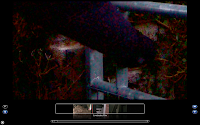In what ways does your media production use/develop/challenge forms and conventions of real media productions?
One of the first things I decided to do was look at opening sequences of other thriller films. I watched Psycho, Vertigo, Secret Window and Silence of the Lambs. By doing this it helped me recognise commonly used codes and conventions in thrillers. Some of these include jump cuts, music including strings or piano, a sense of darkness and low lighting. We also watched the previous AS class's thriller videos to get an idea of what our films should be like. The opening sequence is used to give the audience a basic idea of what the film is going to be about. It helps to establish the location or storyline and the codes and conventions used will usually determine the genre of the film. Camera shots, mise en scene, editing and sound are used to create a certain mood or atmosphere or to create an idea about a main character without using dialogue. In an opening sequence, equilibrium is usually shown, sometimes carrying onto the end of the opening sequence but other times something happens to cause disequilibrium and the atmosphere changes. As seen in Todorov's theory, the restoration of equilibrium is never shown in an opening sequence.
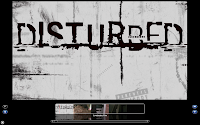 By watching many opening sequences such Psycho, Vertigo, Secret Window and Silence of the Lambs, I discovered that the use of sound is limited or non existant in some cases. Music tends to be heavily relied on to create the atmosphere and mood in the openings. In our own film, we decided to take all the sound out and use no dialogue, putting our chosen soundtrack over the top. We decided that this would create more of an effect than using diegetic sounds. Dialogue in the opening sequence is generally not as effective as aspects such as camera, editing, mise en scene and lighting. All these aspects come together to make subtle hints of what is to come, creating a more mysterious atmosphere. This is instead of using dialogue to make things more obvious and help the audience to get straight to the point. By using the 'no dialogue' approach, it makes the audience feel more involved as they can effectively debate the storyline, personality of the characters and genre.
By watching many opening sequences such Psycho, Vertigo, Secret Window and Silence of the Lambs, I discovered that the use of sound is limited or non existant in some cases. Music tends to be heavily relied on to create the atmosphere and mood in the openings. In our own film, we decided to take all the sound out and use no dialogue, putting our chosen soundtrack over the top. We decided that this would create more of an effect than using diegetic sounds. Dialogue in the opening sequence is generally not as effective as aspects such as camera, editing, mise en scene and lighting. All these aspects come together to make subtle hints of what is to come, creating a more mysterious atmosphere. This is instead of using dialogue to make things more obvious and help the audience to get straight to the point. By using the 'no dialogue' approach, it makes the audience feel more involved as they can effectively debate the storyline, personality of the characters and genre.Darkness or dim lighting is stereotypically used in horror or thriller films. It creates a shadowy, eerie effect and builds tension in the audience. Typical mise en scene in a thriller film would include dark clothing, extravagent make up and no solid props. Editing would also be used to create the effect of a thriller. Jump cuts are a popular choice for a thriller as they create a jumpy, nervy effect. String instruments are commonly used such as cello or violin or instruments such as piano or clarinet as they can sound more solemn and thought provoking.
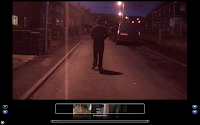 We made our decision of where the location of our film was going to be by considering who had the most seculded and creepy house. In our group, Jamielee had the darkest, loneliest looking house, plus she has an old creaking gate which we imagined would add to the required eeriness. Jamielee's house is tucked away on a private road with no main roads near so noise wouldn't be a problem. The rest of us in the group also lived less than 5 minutes away so it was easy to meet up for filming. The house and street are stereotypical and boring, not an obvious choice for a thriller film which we thought was a good things as it plays against type.
We made our decision of where the location of our film was going to be by considering who had the most seculded and creepy house. In our group, Jamielee had the darkest, loneliest looking house, plus she has an old creaking gate which we imagined would add to the required eeriness. Jamielee's house is tucked away on a private road with no main roads near so noise wouldn't be a problem. The rest of us in the group also lived less than 5 minutes away so it was easy to meet up for filming. The house and street are stereotypical and boring, not an obvious choice for a thriller film which we thought was a good things as it plays against type.In our opening sequence we used general thriller codes and conventions to make our film more authentic. We used simple shots such as panning, close up, long shots and establishing shots. We removed all sound including diegetic sounds, because we could add our own effects and edit them in easily. We felt that instead of adding diegetic sounds in, non diegetic music would give it a more surreal feeling. Our storyline meant that we were going to film in the dark which was beneficial as that linked in with most thriller movies. It added to the dark, threatening atmosphere that we wanted to create.
How does your media product represent particular social groups?
We decided to call our film 'Disturbed' for two reasons. The idea of the film was an intruder who 'disturbs' a woman in the dead of night. We also wanted to convey an idea of ill mental health. The stalker in the film would have to be either mentally affected or just evil and the title 'Disturbed' gives a clearer idea of what our film is meant to be about and also links the two ideas with one word.
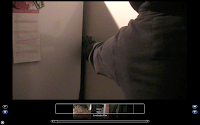 Throughout the planning of our film we had the idea of the character the stalker/ murderer knows your name, knows your life and knows where you live. This is shown by the first scene of the man looking at pictures of dead girls and newspaper headings. The girl used in our film was blonde, young and alone, a typical representation of a victim or 'damsel in distress'. Our film was based on the film One Hour Photo which is about a middle aged man that works in a one hour photo lab, he finds out about his customers through the photos they have developed and he gets obsessed and takes photos of people to keep for himself. There is a scene in One Hour Photo where Robin Williams who plays the stalker, is seen looking at a whole wall of pictures of people who he has targeted. This tied in with our idea of making our stalker do the same. Instead of making the pictures of one family, we decided to make it his previous victims to make the film seem more dark and eerie. Although this doesn't represent the typical man very well, we wanted to base our film on an unlikely character doing something out of ordinary.
Throughout the planning of our film we had the idea of the character the stalker/ murderer knows your name, knows your life and knows where you live. This is shown by the first scene of the man looking at pictures of dead girls and newspaper headings. The girl used in our film was blonde, young and alone, a typical representation of a victim or 'damsel in distress'. Our film was based on the film One Hour Photo which is about a middle aged man that works in a one hour photo lab, he finds out about his customers through the photos they have developed and he gets obsessed and takes photos of people to keep for himself. There is a scene in One Hour Photo where Robin Williams who plays the stalker, is seen looking at a whole wall of pictures of people who he has targeted. This tied in with our idea of making our stalker do the same. Instead of making the pictures of one family, we decided to make it his previous victims to make the film seem more dark and eerie. Although this doesn't represent the typical man very well, we wanted to base our film on an unlikely character doing something out of ordinary. What kind of media institution might distribute your media product and why?
We began to look at production companies that we would have liked to produce our film. We all liked the idea of the American Producion company, 'New Line Cinema' which is based in New York. It came to our attention when we were researching the film One Hour Photo as New Line Cinema produced that film. This film company also has a good reputation and has produced many good thrillers. A more realistic approach would be a small independent film company like Dragon Studios based in Llanharan. As it is local and has produced a small number of films, we would have more rights as it is more of a low budget company.
 Who would be the audience for your media product?
Who would be the audience for your media product?Our target audience was 15 - 18 year olds and i think we achieved this target as it is spooky, features teenagers and would appeal to both sexes. We chose this audience because we were using teenagers in the film and we used many aspects in it that teenage viewers can relate to, such as the decoration of the victim's room, the typical 'homely' home, the bright pajama bottoms worn by the victim. This can appeal to the target audiences interest because its more real to them and makes them more on edge as they could do similar things in their own houses.
How did you attract/address your audience?
The music we used in the beginning to introduce the film is dark and foreboding, which I feel would attract a person of any age who likes to be thrilled or scared. We also made the opening sequence seem like more than a random spontaneous attack as the stalker is quiet, precise and protected; the use of gloves, dark clothing etc, makes him seem experienced. This suggests to the audience that there is a story to be told before the killings started and it would make them want to see the whole film to see if it develops so they can understand why he began the killings. They may also want to see how many he has killed before and after the attack shown in the opening sequence. We also left the opening sequence unexplained, a clear show of disequilibrium, so the audience would want to know if the killer is caught or his reasons behind it.
When doing our storyboard our first idea was to have a tall hooded man walking up a street towards a house on the corner, it would then to cut to a girl lying in bed then back to the man. The man will then walk up the drive of the house then reaches under a plant pot to get a key for the house. He then walks slowly into the house dropping the keys on the floor. The he looks around for anyone the man starts walking up the stairs and peers into the girl’s room. The girl is still fast asleep unaware of anything that is going on. The man then lifts his arm holding a knife in his hand, the audience seeing the shadow of the arm and knife on the wall and then the film cuts to the knife on the floor with a scream.
Then our second idea was having a young woman that lives on her own, she starts to get ready for bed after just watching the news, she is very worries about the warnings on her news about killings in her area. The woman makes sure all her doors are locked, turns the lights off and walks slowly up the stairs when she hears a bang in the back garden, but thinking it was just next door she continues to go up the stairs. The film would cut with a hooded man standing at the back door.
Our third and final storyboard begins with an over the shoulder shot of the hooded figure staring at the wall looking at picture of his past victim’s .Cuts to the hooded figure walking up a street and towards the gate of the house. Then cuts to a girl lying in bed with a lava lamp lighting up her face. Cuts to the mans hand on the gate, you hear a creaking noise from the gate then is a shot of the girls face opening her eyes. Then cuts to the hooded figure opening the door, we see him walk through it and close it quietly after him. Then the girl walks down the stairs into the kitchen and start to fill up the glass of water. A hand then appears and turns the light off, silence fills the room until there is a blood curling scream and then there is silence again. We decided on the last idea because it was doable and wouldn't take too much difficult filming. We wanted to spend more time on the editing rather than the filming.

We made our own production name 'Kompozer Productions' because we wanted to be different instead of using our initials like many others. We composed our own soundtrack at the end of the opening sequence so we felt that we earned the titile of 'Composers'. We spelt it colloquially because our target audience is teenagers so we thought it would appeal to them more.
What have you learn about technologies from the process of constructing this product?
We learnt a lot as a group while doing this project. At times, our ideas clashed and we had a few arguments on what was the best way to make our film as good as we could. Due to the resources available to us we were able to make the film seem real and as professional as we could. We learnt how to film different shots outdoors and indoors and what angles and lighting were the best to use in different conditions. We also learnt how to upload the film onto the Macs using the firewire and how to edit it with transitions, sound and cutting techniques. We all did our fair share to edit and create the film and I feel we worked very well as a group. We were most proud of the introduction we produced using the Mac's resources with transitions and sounds. A lot of the time we spent the whole day in front of the Macs improving and changing our film and the finished product was a lot better than we ever imagined we could achieve. As i hope to go into the media industry, I can see how much this exercise helped me to learn different things about film. As a group we have many new skills we can apply to aspects of Media. I have learnt how much work goes into the smallest bit of filming, our opening sequence had a limit of 2 minutes yet it took us months to get it to the standard we wanted it.
Looking back at your preliminary task, what do you feel you have learnt in the progression from it to the full product?
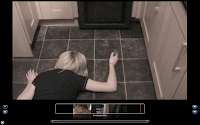 Throughout our film we went through many mistakes and problems. We had to change the boy who played the stalker because the one we originally decided on wasnt free as often as we needed. We also needed to change and re take a few shots because when we played it back we realised that in some the camera was shaking or blurring. In two of the shots, we had to film in daylight because one of the actors wasnt available to shoot later on and we needed it that night. This meant that when editing, we had to change the lighting and it didn't look completely the same as the rest of the shots. We also had problems editing the film on the Macs as the sound kept disappearing out of the scream scene and the gate scene. We overcame these problems as a group and eventually straightened out these problems through perserverence and hard work. It helped us to realise how hard but important an opening sequence is in a film. I have learnt that missing deadlines and delaying filming only affects the quality of the film, because even an opening sequence can take months of work and still not be as you wanted.
Throughout our film we went through many mistakes and problems. We had to change the boy who played the stalker because the one we originally decided on wasnt free as often as we needed. We also needed to change and re take a few shots because when we played it back we realised that in some the camera was shaking or blurring. In two of the shots, we had to film in daylight because one of the actors wasnt available to shoot later on and we needed it that night. This meant that when editing, we had to change the lighting and it didn't look completely the same as the rest of the shots. We also had problems editing the film on the Macs as the sound kept disappearing out of the scream scene and the gate scene. We overcame these problems as a group and eventually straightened out these problems through perserverence and hard work. It helped us to realise how hard but important an opening sequence is in a film. I have learnt that missing deadlines and delaying filming only affects the quality of the film, because even an opening sequence can take months of work and still not be as you wanted.
